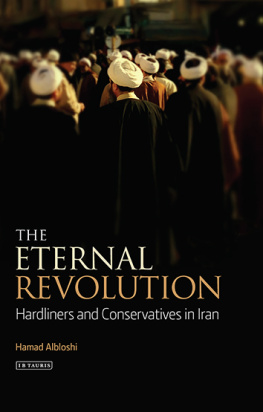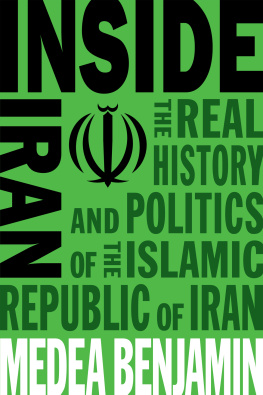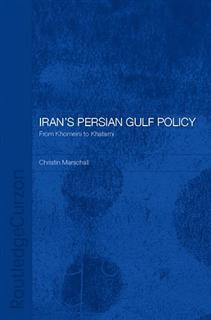First published in 1986
This edition first published in 2011
by Routledge
2 Park Square, Milton Park, Abingdon, Oxon, OX14 4RN
Simultaneously published in the USA and Canada
by Routledge
270 Madison Avenue, New York, NY 10016
Routledge is an imprint of the Taylor & Francis Group, an informa business
1986 Sepehr Zabih
Routledge is an imprint of the Taylor & Francis Group, an informa business
Printed and bound in Great Britain
All rights reserved. No part of this book may be reprinted or reproduced or utilised in any form or by any electronic, mechanical, or other means,now known or hereafter invented, including photocopying and recording,or in any information storage or retrieval system, without permission in writing from the publishers.
British Library Cataloguing in Publication Data
A catalogue record for this book is available from the British Library
ISBN 13: 978-0-415-57033-6 (Set)
eISBN 13: 978-0-203-83010-9 (Set)
ISBN 13: 978-0-415-61786-4 (Volume 37)
eISBN 13: 978-0-203-82905-9 (Volume 37)
Publishers Note
The publisher has gone to great lengths to ensure the quality of this reprint but
points out that some imperfections in the original copies may be apparent.
Disclaimer
The publisher has made every effort to trace copyright holders and would
welcome correspondence from those they have been unable to trace.
THE LEFT IN
CONTEMPORARY
IRAN
IDEOLOGY, ORGANISATION AND THE
SOVIET CONNECTION
SEPEHR ZABIH
1986 Sepehr Zabih
Croom Helm Ltd, Provident House, Burrell Row,
Beckenham, Kent BR3 1AT
Croom Helm Australia Pty Ltd, Suite 4, 6th Floor,
64-76 Kippax Street, Surry Hills, NSW 2010, Australia
British Library Cataloguing in Publication Data
Zabih, Sepehr
The left in contemporary Iran.
1. Socialism - Iran 2. Communism - Iran
I. Title
320.955 HX385.3.A6
ISBN 0-7099-3004-6
The Hoover Institution on War, Revolution and Peace, founded at Stanford University in 1919 by the late President Herbert Hoover, is an interdisciplinary research center for advanced study on domestic and international affairs in the twentieth century. The views expressed in its publications are entirely those of the authors and do not necessarily reflect the views of the staff, officers, or Board of Overseers of the Hoover Institution.
Hoover Press Publication 342
First printing, 1986
90 89 88 87 86 9 8 7 6 5 4 3 2 1
Library of Congress Cataloging in Publication Data
Zabih, Sepehr.
The Left in contemporary Iran.
Bibliography: p.
Includes index.
1. Communist parties-Iran-History. 2. Iran-politics and government-20th century. 3. Iran-Foreign relationsSoviet Union. 4. Soviet Union Foreign relations-Iran. I. Title.
HX385.2.A6Z33 1986 324.255'075 85-30553
ISBN 0-8179-8421-6
Printed and bound in Great Britain
by Billing & Sons Limited, Worcester.
PREFACE
This study has three interwoven strands: 1. an inquiry into the ideologies and organisations of the Left in contemporary Iran; 2. a critical examination of the interaction between these organisations and the Islamic Republic; and 3. an analysis of the connections of the Soviet Union with the Iranian Left. The section on the Tudeh Party is a sequel to my earlier work on the Iranian communist movement from 1917 to 1967, and a more recent study covering the 1917-41 epoch.
The introductory chapter puts the Left into historical perspective. It is followed by a review of Soviet interaction with the Iranian Revolution and the Islamic Republic. The rise and demise of the Old Left, the pro-Soviet Tudeh Party, between February 1979 and May 1983 and the concomitant crisis in Soviet-Iranian relations thereafter is a primary focus of this study. Next, the New Left between 1966 and 1981 is studied in terms of its ideological development, its many organisational changes and crises, and its performance prior to and since the 1978-9 Revolution. The defection of a majority of leftist organisations from the Islamic regime by the summer of 1981 and the governments brutal repression of these groups in 1981-2 will be emphasised.
An account of the Militant Left and its resort to insurgency as a means of fighting the Islamic regime constitutes the next chapter. The Conclusion will offer some generalisations and a prognosis about the Left as a whole in contemporary Iran. No attempt will be made to cover the so-called Ethnic Left, such as the Kurdish Communist Kumeleh , because it has a narrow regional base. However, reference will be made to links between it and nationwide leftist groups when justified.
The need for this study was recognised when the author was conducting research for his most recent book, Iran Since the Revolution , shortly after the rise of Khomeinis theocracy to power. Although a chapter of that study is devoted to the Left and the Islamic Republic, it soon became apparent that the subject deserved a more comprehensive examination. With the banning of the Mojahedin, one of the strongest Islamic-Marxist organisations during and immediately after the Revolution, a host of literature on that organisation became available, and the outlawing of the Tudeh Party in May 1983 and the crisis in Soviet-Iranian relations gave new impetus to interest in the politics of the Left and Soviet-Iranian relations since 1979.
Another factor was the authors perception of the inherent instability of the Khomeini regime and the likelihood of an intense succession crisis. The Left, as an integral part of future development in Iranian politics, will doubtless play a critical role in Irans post-Khomeini political configuration.
In several presentations at academic and US State Department-sponsored conferences in the United States and Western Europe, as well as in several articles in journals, I have attempted to draw the attention of public officials and scholars to these issues in contemporary Iran. I was much encouraged by their response. George Lenczowski, of the University of California at Berkeley and the Hoover Institution, was particularly active in initiating outside support for the study. Dr William Quand of the Brookings Institution recommended a tentative outline of the volume to the Brookings Institution. By spring 1983 I was granted financial and research support including a summer guest scholarship at the Brookings Institution and a one-year visiting scholarship at the Hoover Institution. Saint Marys College of California offered me the scholarly leave that has made possible my full-time dedication to this study since May 1983.










